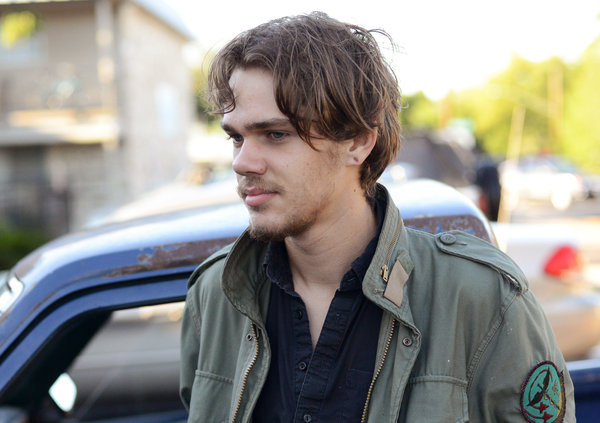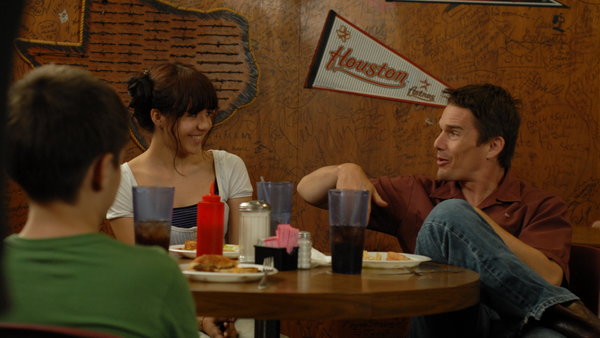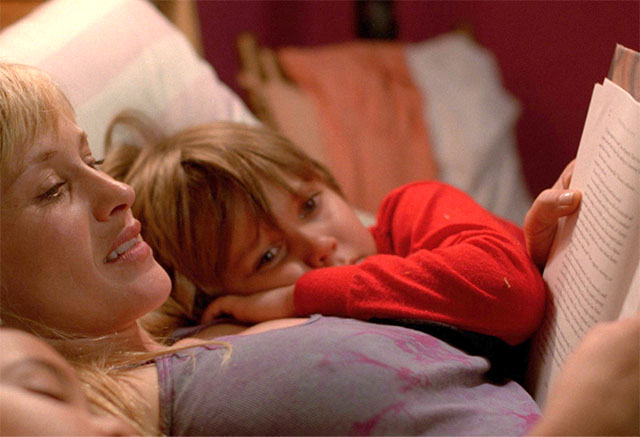Boyhood Review
Calling “Boyhood” “unlike anything you’ve ever seen” is stating the obvious, yet there is almost no other way to describe it in as many words. Making a film over the course of 12 years with the same cast, Richard Linklater has transformed everything we know about filmmaking, in some ways challenging the very definition of “film.”
It sounds simple: tell the story of a boy growing up in close to real time by filming him every year of his life instead of having him play a younger version of himself or casting another actor in the role. But “Boyhood” accomplishes so much more than the mere use of an edgy approach to storytelling. It turns out that watching a character grow up on screen has a radical effect on how we perceive the character, how we relate to him and how we connect to him. It’s a completely different experience for the viewer.
As such, Ellar Coltrane has the coolest keepsake/chronicle of his childhood anyone could ever ask for as the star of this movie. He plays Mason, ages 5 through 18, who along with his big sister (Lorelei Linklater, Richard’s daughter) lives in Texas with his mom (Patricia Arquette) and occasionally visits with his dad (Ethan Hawke). The film chronicles his growing pains and formative experiences, from trouble with his stepfathers to life transitions to adventures with his dad.

“Boyhood” is easily the closest that fiction has ever come to cinema verite. It often feels similar to watching a documentary. Linklater tells the story in chronological order, unlocking the true potential of his film in doing so because jumping back and forth would have given off the appearance of significantly more editorial control, damaging the powerful realism of the project.
What makes “Boyhood” more than just a really successful filmmaking “gimmick,” however, is the power of its nostalgia and the universality of Mason’s experience. Linklater didn’t just pick a random kid and film his life; he crafted this story. The film’s realism, the fact that it reflects pieces of our own life experiences back at us, is not a byproduct of this storytelling technique, but by Linklater’s own design. Not just any director could’ve undertaken this project and achieved the same poignant result. His filmmaking experience (“Dazed and Confused,” “Before Sunrise” and its sequels, and “Bernie”) shows he has a real knack for playing with time and realism in his films.
This in mind, Linklater’s prowess as an editor really shines in “Boyhood.” When you endeavor to make a film over the course of 12 years, you can’t possibly know what you will need in the final every last piece of footage has been collected. Making sure at the time of filming that he had the right amount of footage to choose from later on and being able to tell one story from disjointed periods of filming takes the keenest of skill.

A lot of the brilliance of the film is how past and future Richard Linklater work together. Past Linklater, the man behind the camera each of those years, understood the value of capturing footage that would put a distinctive time stamp on each year of filming. Future Linklater, the editor piecing the entire film together, used the powers of hindsight to sort through this footage and include scenes or bits of dialogue that add powerful nostalgia to the movie.
For example, a short, wordless scene shows younger Mason, Samantha and their step-siblings at the midnight book release of “Harry Potter and the Half-Blood Prince” in July 2005. Linklater soaks up the entire ambiance of this moment, which has nothing to do with the plot, and then however many years later, edits it into the movie in such a way that the millions who felt connected to those books when they were first released feel an instant, deep connection to it watching the film. He captured a collective cultural memory as it was happening and weaved it into the greater story of one child’s life, not unlike the way we experience these moments in our own life. They happen once and they become memories. Similarly, Hawke’s character is very politically outspoken, so we get treated to his thoughts at the end of the Bush presidency and the beginning of Obama’s, reminding us of public sentiment during these years.
The fascination with watching years of our lives in the form of Mason’s play out in just hours is the film’s hook, which allows the story flexibility to be more true-to-life. As moviegoers, we are conditioned to wait for the other shoe to drop, the scene of heightened melodramatic tension – there’s almost none of it. The ratio of actual drama in our own lives to actual drama that happens in this film is virtually the same. Hawke’s character, for example, isn’t the deadbeat dad stereotype who comes back to cause problems for Mason and his family. He’s more complex and less predictable. There’s no full-circle effect in this movie or plot twist of thematic significance, just a straight linear story of how things change (or don’t) with time with a few meaningful reflections at the end.
Most films need those plot devices to be interesting. “Boyhood” doesn’t. That’s what makes it so unique, like dictionary definition of unique a.k.a. purely in a category of its own. Filmmakers could imitate this concept, but they probably would struggle to reach the same degree of authenticity, to have both the foresight and the hindsight, the ability to plan ahead and be flexible, to make a cohesive product. So Linklater didn’t just make a cool film, ground-breaking film; he has transcended the very notion of what filmmaking can be.
5/5 Stars
Boyhood
Written and Directed by Richard Linklater
Starring: Ellar Coltrane, Patricia Arquette, Ethan Hawke, Lorelei Linklater






0 Comments
You can be the first one to leave a comment.